
| Farming snails 1: Learning about snails; Building a pen; Food and shelter plants հղում աղբյուրինfb33fe.htm |
| Plant the food and shelter plants |
 |
|
Plant the food and shelter plants
112. You have already been told that you should clean and prepare the site and build your snail pen in time for the planting season.
113. If it has been only a short time since you dug the ground and worked the soil in your pen, you can begin to plant.
114. If it has been a long time, dig and work the soil again before you plant. However, as you were told in Item 96, do not use fertilizer, animal manure or compost.
115. Now you can begin to plant the food and shelter plants. Remember that you should use
• plants that grow well where you live
• plants that last a long time
• plants that snails like
116. The drawings, show you two ways to plant food and shelter plants in a 5 x 5 metre pen.
117. On pages 50 to 55 you will see some food and shelter plants that snails are known to like. Look at them carefully. Perhaps you can find some of them where you live.
Two ways plant food and shelter plants
1 if your shelter plants are small, plant your pen like this

Mark three places for small shelter plants
2 plant the shelter plants first and then plant the food plants all around the shelter plants

First plant the shelter plants
3 if your shelter plants are large, plant your pen like this
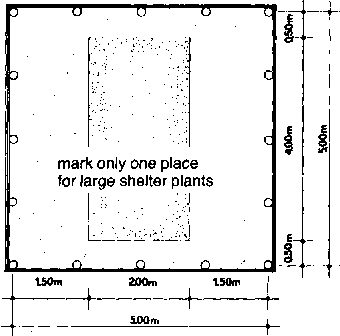
Mark only one place for large shelter plants
4 plant the shelter plants first and then plant the food plants all around the shelter plants
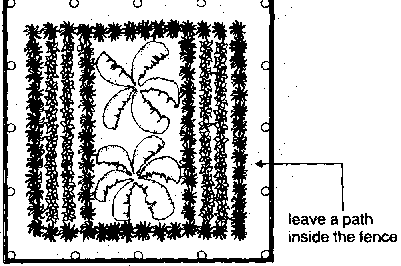
Leave a path inside the fence
RAMPE

Some plants for food
Rape is one of many kinds of smooth- leaved cabbage. It grows from seed and lasts a number of months. Rape is the best food plant for Helix snails (see pages 8 and 9 in this booklet). Many of the other kinds of smooth- leaved cabbage also make good food plants for snails.
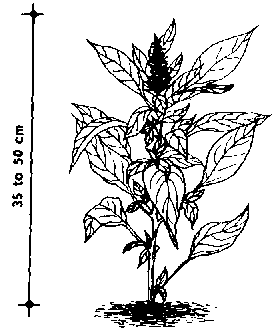
Rape
AFRICAN SPINACH (Amaranthus)
This green leafy vegetable is a good food plant for young Achatina and Archachatina snails. However, if you plant African spinach for your snails, they will need other kinds of food plants as well.

African spinach
PAPAYA
You have already been told that snails can be given food to eat other than the food plants that you have planted in the pen (see also Items 175 to 179 in the next booklet). The tender green leaves and cut- up fruit of the papaya tree are very good for Achatina and Archachatina snails. However, the papaya should not be planted inside the pen.
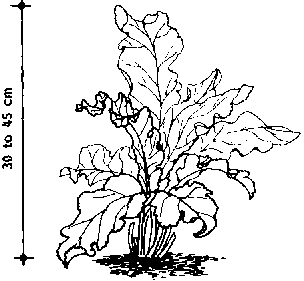
Papaya
HORSE- RADISH
Horse- radish is a good food and shelter plant for young Helix snails. However, when they are older they will need other kinds of food plants as well.
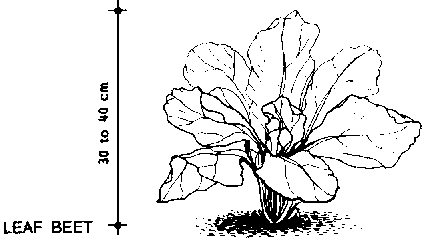
Horse- Radish
LEAF BEET
Leaf beet grows well from seed and lives for one year. It can be used with He/ix snails for both food and for shelter. As a food plant alone it is not the best and you will have to give your snails other food plants as well. However, as a shelter plant it is very good for Helix snails. These snails lay eggs under the beet plants and find shelter around the roots in cold weather.

Leaf Beet
BURDOCK
Burdock grows from seed and lives for more than a year. It grows very slowly and you should plant it as soon as you can so that it can grow big enough for your snails. However, once it has grown it makes a good food and shelter plant for almost any kind of snail.
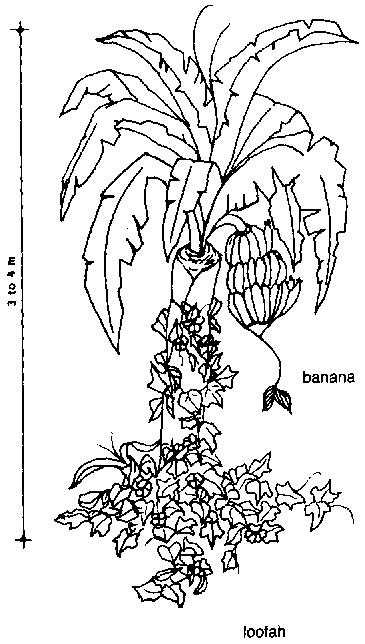
Burdock
BANANA and LOOFAH
Banana and loofah plants together provide both food and shelter for Achatina and Archachatina snails. Ripe bananas can be cut up and fed to the snails and they can use the loofah plant for food and for shelter. However, your snails will need other food plants as well.
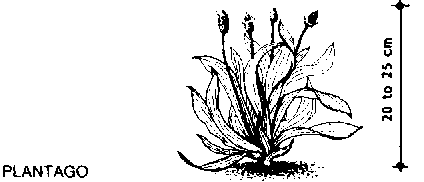
Banana and Loofah
PLANTAGO
Plantago grows well from seed and lasts about two years. It is the best shelter plant for Helix snails.
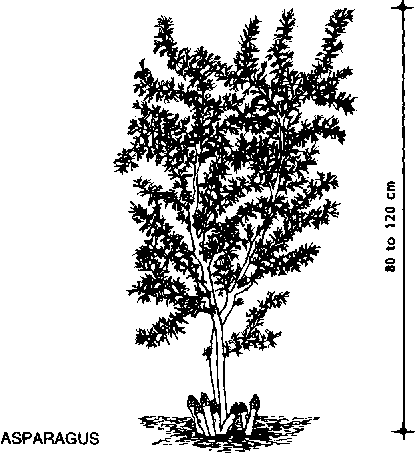
Plantago
ASPARAGUS
Asparagus lives for many years and it is a good shelter plant for young Achatina and Archachatina snails. However, it is not good for older snails because they are too heavy for asparagus plants.